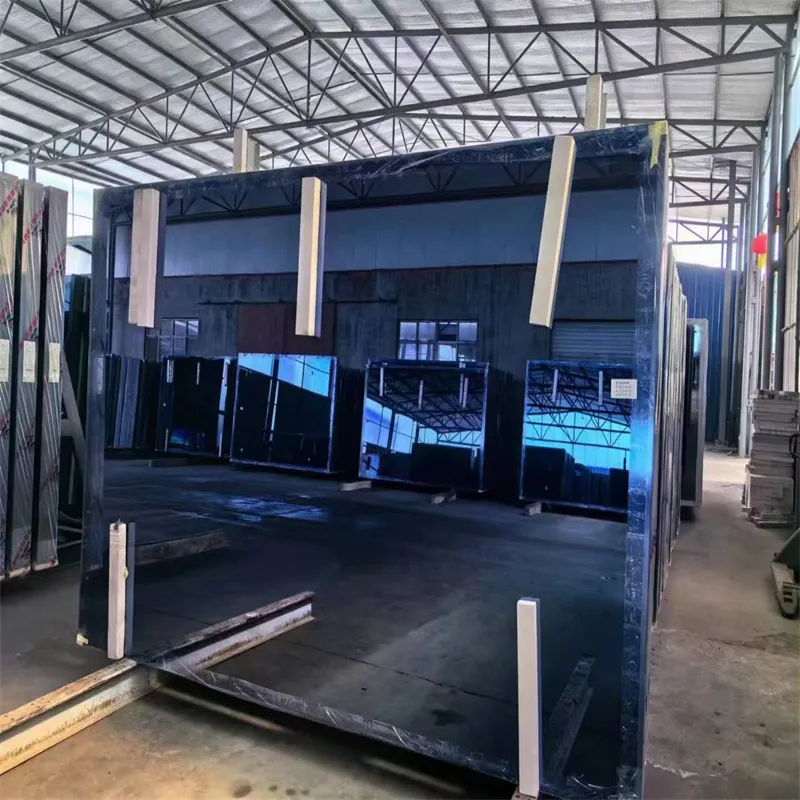Dec . 31, 2024 05:25 Back to list
Advanced Infrared Reflective Glass for Enhanced Energy Efficiency and Comfort Solutions
The Versatility of IR Reflective Glass An Innovative Solution for Modern Architecture
In the realm of modern architecture, the integration of advanced materials has become pivotal in not only enhancing aesthetic appeal but also in improving energy efficiency. One of the breakthrough innovations in this field is IR (Infrared) reflective glass. This specialized glass is engineered to reflect infrared radiation while allowing visible light to pass through, making it an ideal choice for contemporary buildings that aim to balance natural light and thermal comfort.
Understanding IR Reflective Glass
IR reflective glass is manufactured through a meticulous process that infuses the glass with thin layers of metallic compounds. These layers effectively reflect infrared rays, which are primarily responsible for heat transfer. As a result, when sunlight strikes the glass, the IR reflective properties ensure that a significant portion of this heat is bounced back, while still permitting a high level of visible light to enter the building. This dual functionality allows architects and designers to harness natural lighting while minimizing the reliance on artificial lighting, thereby reducing energy consumption.
Energy Efficiency and Sustainability
The most compelling advantage of IR reflective glass is its contribution to energy efficiency. According to studies, buildings equipped with this type of glass can reduce cooling costs by up to 30%. In times when climate control is essential for occupant comfort, the ability of IR reflective glass to maintain cooler interior temperatures translates to lower energy usage and reduced carbon emissions. This aligns perfectly with the growing emphasis on sustainability within the construction sector, as more architects and builders seek to meet stringent environmental regulations and certifications, such as LEED (Leadership in Energy and Environmental Design).
Aesthetic Appeal
ir reflective glass

Beyond its functional benefits, IR reflective glass offers significant aesthetic advantages. Available in various tint levels, colors, and finishes, this glass provides flexibility in design while enhancing the overall appearance of a building. Its reflective quality can contribute to a visually striking facade, creating an interplay of light and shadow that changes throughout the day. Furthermore, the use of IR reflective glass reduces the need for heavy shading devices, which can obstruct views and detract from the original design intent.
Thermal Comfort and Indoor Environments
The impact of IR reflective glass extends beyond the external facade to the indoor environment. By mitigating excessive heat gain, this glass promotes thermal comfort for occupants, ensuring that spaces remain pleasant and conducive to various activities. Additionally, with less reliance on air conditioning systems, indoor air quality improves, as there is a lower likelihood of air stagnation associated with overly cooled spaces. This creates healthier living and working environments, which is increasingly recognized as a crucial factor in overall well-being.
Applications Across Different Sectors
The versatility of IR reflective glass finds applications across various sectors, ranging from commercial skyscrapers to residential homes. In high-rise buildings, it can significantly reduce the heat load on the structure, prolonging the lifespan of HVAC systems and enhancing occupant comfort. In residential applications, homeowners benefit from larger windows that provide panoramic views without compromising on energy efficiency or privacy. Furthermore, the integration of IR reflective glass in educational and healthcare facilities has been shown to enhance learning environments and patient care by optimizing natural light while controlling glare and heat.
Conclusion
As the demand for sustainable and energy-efficient solutions grows in the construction industry, IR reflective glass stands out as a remarkable innovation that offers both functional and aesthetic benefits. Its ability to reflect infrared radiation while allowing visible light to permeate makes it an invaluable asset for designers and architects striving to create modern, sustainable buildings. In an era where energy efficiency and environmental responsibility are paramount, incorporating IR reflective glass not only represents a smart choice but also an essential step towards a more sustainable future in architecture. The ongoing development and adoption of such technologies will undoubtedly play a crucial role in shaping the cities of tomorrow.
-
Safety and Style with Premium Laminated Glass Solutions
NewsJun.24,2025
-
Reinvents Security with Premium Wired Glass
NewsJun.24,2025
-
Premium Float Glass Line for Modern Architecture
NewsJun.24,2025
-
Low Emissivity Glass for Energy-Efficient Architecture
NewsJun.24,2025
-
High-Performance Insulated Glass Solutions for Modern Architecture
NewsJun.24,2025
-
Elevates Interior Style with Premium Silver Mirror
NewsJun.24,2025
Related PRODUCTS














